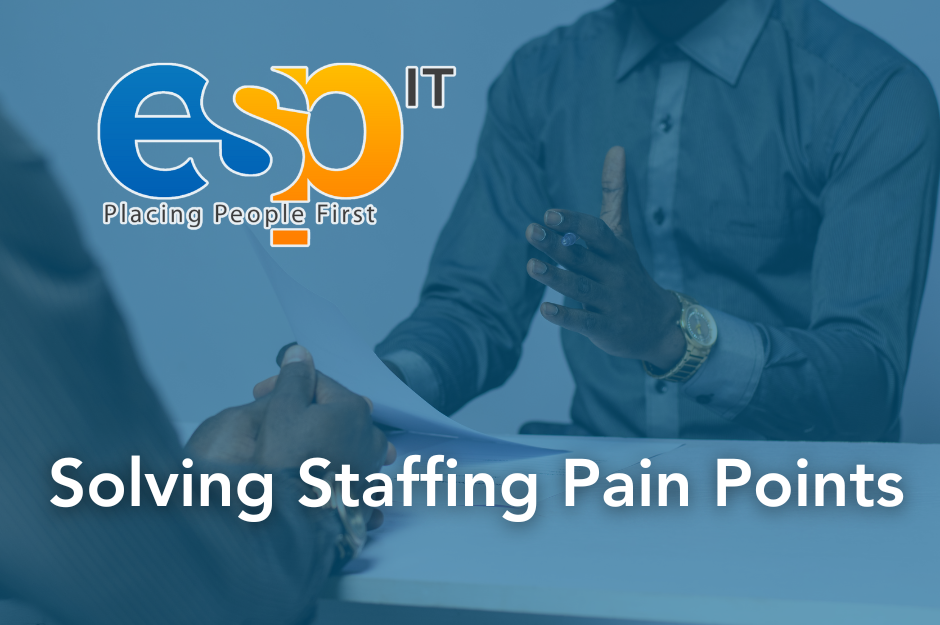There’s been a recent trend in workplace “total wellness” initiatives to shift emphasis from work-life balance, to work-life integration – and we think IT pros everywhere should rejoice. Though the work-life balance camp is well intentioned, the movement still has professionals seeing “work” and “life” as two mutually exclusive, competitive facets. Instead, work-life integration sees “life” as an interaction with multiple domains, work, which has resulted in increased productivity and greater personal satisfaction. For IT pros in particular, the shift comes with many benefits, ultimately resulting in the potential to strengthen your reputation as a consultant.
Ready to board the work-life-integration train? These tips will help you achieve and maximize your new mode of living:
-
Ask For Work-Life Integration.
Communication with your boss, hiring manager, or direct supervisor is key. When you interview for your next gig, let the hiring managers know you believe in integrating your work into your life, and that doing so will mean a need for increased flexibility and trust, but that it will also lead to greater productivity and faster project turn-around. They certainly will be happy to hear that you view your work as an important aspect of your life, and are likely to want to work with you to achieve the flexibility that you need.
-
Create A Flexible Calendar.
Your calendar should incorporate everything from professional meetings to time spent at the gym. The goal is to put in hours when you are most productive, and schedule your time strategically. Maximizing your productivity in this way will help you avoid falling prey to burnout, and will also ensure that you accomplish everything you desire (personally and professionally) during your days and throughout your week. It’s always a good idea to look back on your calendar at the end of the week and evaluate your time distribution. If things seem to be off-balance, make adjustments in your calendar planning for the next week. Achieving true integration should be a never-ending process.
-
Continue To Say “No” When Necessary.
Increased productivity and flexibility does not mean unlimited time or resources. Continue to be aware of your time restraints and physical limits, and don’t take on more work than you can handle. Some work-life integrators remain so plugged into work throughout their days that they average 50-60 hour work weeks. While using a flexible calendar (see tip 2) will help you make sure these crazy hours aren’t happening unnecessarily, ultimately it is your responsibility to be aware of your workload and pace, and to communicate those limitations to your supervisor. Work-life integration is meant to be mutually beneficial to both employer and employee, and it’s important not to lose sight of that in your efforts to be an exemplary IT Pro.
-
Learn What Works Best For You and For Those Around You.
Integration means having the freedom to put in hours working your IT gig when it’s most convenient for you. What matters is not where or when the work is getting done, or what happens in between time spent on projects, but simply that the work IS getting done. Take advantage of that flexibility and ensure that you’re maximizing your productivity. Perhaps you’ll find that it’s best to contact one supervisor later in the evening, or that you get the most relaxation from an hour of personal time in the early afternoon. Identifying routines that work best outside of a “normal” work day is what work-life integration is all about. At the same time, remain considerate of your coworkers who favor a 9-5 schedule by identifying the best times for them to reach you during a “normal” working day.
-
Acknowledge That Integration Isn’t For Everyone.
Not all IT pros will see work-life integration as a positive trend. While some pros are embracing and coming to expect work-life integration, others are likely to see it as a bad thing – and that’s OK. Work-life integration ultimately exists to benefit professionals, and it’s important to recognize that some pros, especially those who are just entering the workforce, place a much stronger value on flexibility and accessibility than do others, who instead tend to favor security and stability. However, a difference in work-style shouldn’t mean problems working together. No matter what camp you identify with, it’s important that you keep an open mind, and remain understanding of your teammates’ unique working style.
There would be no work-life integration, flexibility, or remote working without technology. Work-life integration aims to meet the the increased demands of work brought on by the technology that goes everywhere with us, ensuring that work gets done when it needs to and professionals can still meet their personal obligations and desires. With these tips, you can be among the first to reap the benefits of an integrated lifestyle, just as you’re the first to innovate, revolutionize, and adopt the newest technologies.



